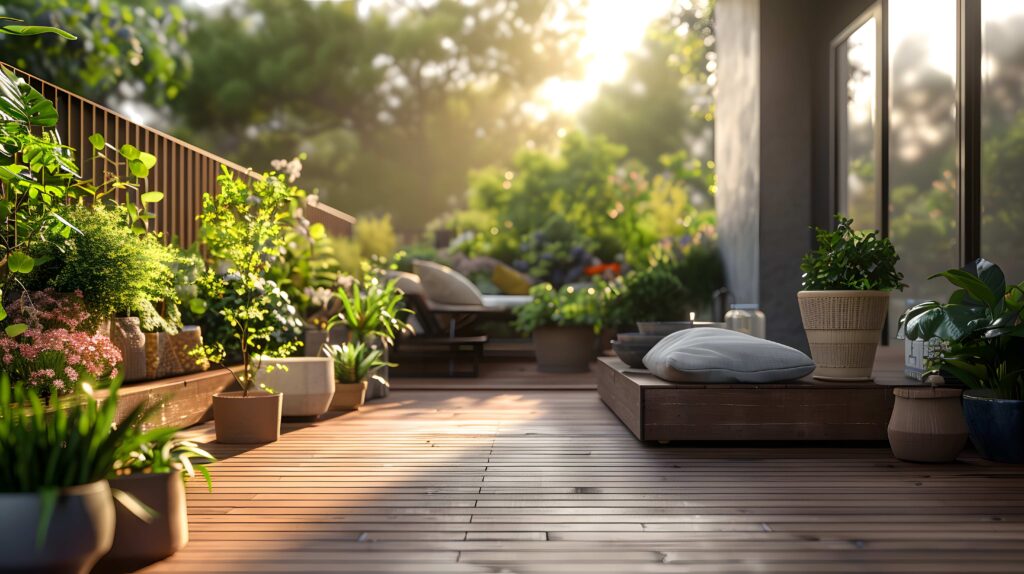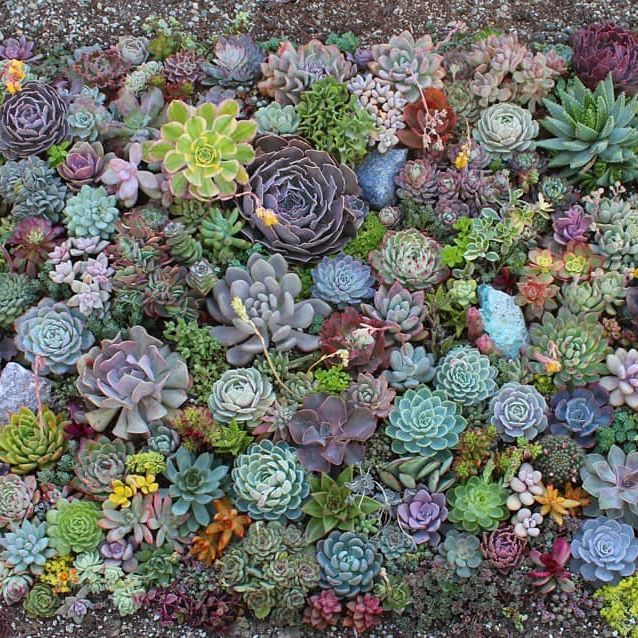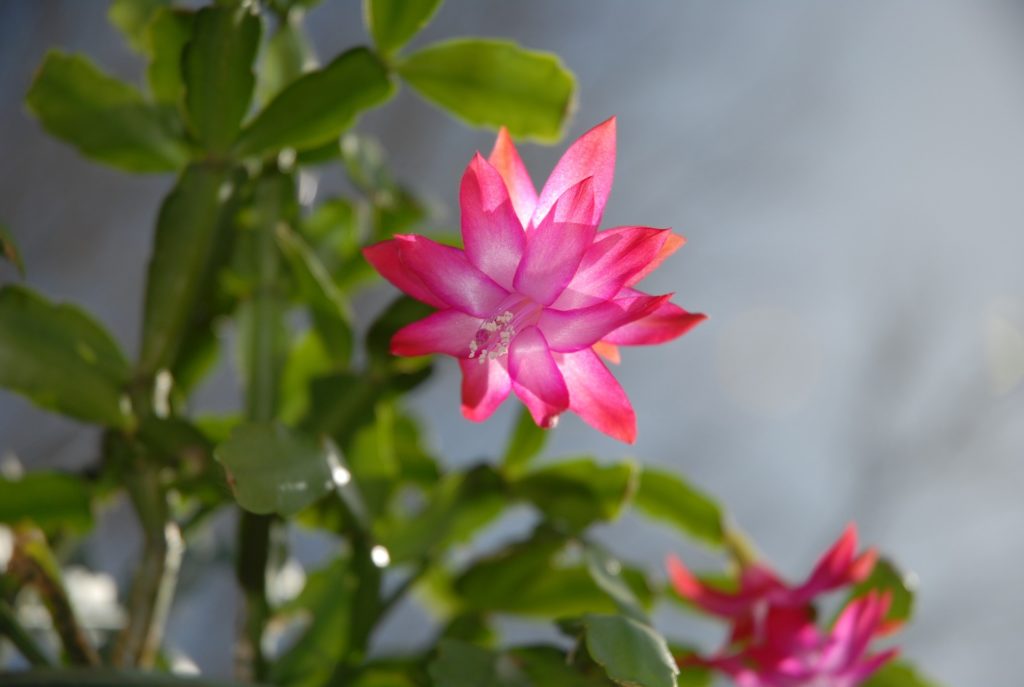Quick Summary:
- Explore: Discover how different garden styles can transform your outdoor space.
- Choose: Find the perfect succulents to complement your chosen style, from minimalist elegance to vibrant abundance.
- Thrive: Learn practical tips for succulent care, ensuring your plants flourish with minimal effort.
Gardening can be a bit of a rollercoaster. Some days, you’re basking in the glory of your blooming flowers. On other days, you’re battling weeds, pests, or unpredictable weather. If you’ve ever wished for plants that require less fuss and offer more fabulousness, then succulents are your answer.
These hardy, water-wise wonders have exploded in popularity, and for good reason. They come in a dazzling array of shapes, sizes, and colors, adding a touch of the exotic to any space. They’re incredibly adaptable. Whether you’re blessed with a sprawling backyard or confined to a cozy balcony, there’s a succulent that’s perfect for you. And the best part? They practically thrive on neglect.
But before you rush to the nearest nursery, explore the wonderful world of garden styles and discover the ideal succulents to match your unique vision. After all, a garden should be an extension of your personality, and the right plants can make all the difference. So, grab a cup of tea, settle in, and dive into the exciting world of succulents!
Understanding Garden Styles

Even in the heart of a bustling city, gardens can carve out a sanctuary of tranquility and beauty. Whether you have a spacious backyard or a compact balcony, there’s a garden style waiting to transform your urban space. From sleek and minimalist designs to vibrant, overflowing oases, each style offers a unique personality and charm. Here’s a quick tour of some popular garden styles and discover how they can elevate your home sanctuary.
Modern Minimalist
Think clean lines, geometric shapes, and a restrained color palette. This style focuses on simplicity and functionality, with an emphasis on hardscaping elements like concrete, stone, and metal. Plants are carefully chosen for their architectural forms and textures.
Cottage Garden
This style is a romantic’s dream, bursting with colorful flowers, overflowing planters, and winding pathways. It evokes a sense of whimsy and abundance and focuses on creating a welcoming and inviting atmosphere.
Desert Garden
Inspired by arid landscapes, this style features drought-tolerant plants like cacti and succulents, along with gravel or sand mulch. It’s a low-maintenance option that celebrates the beauty of minimalism and resilience.
Tropical Garden
Lush foliage, vibrant colors, and exotic plants define this style. It creates a sense of escape and adventure, reminiscent of a tropical paradise. Water features and decorative elements often add to the overall ambiance.
Mediterranean Garden
This style captures the warmth and charm of the Mediterranean region. It features drought-tolerant plants, terracotta pots, and a focus on creating outdoor living spaces for relaxation and entertaining.
These are just a few examples, and there are countless other garden styles to explore. The key is to identify the style that resonates with you and complements your home’s architecture and surroundings. Once you have a clear vision in mind, choosing the right succulents becomes a breeze.
Best Succulent Varieties for Each Garden Style
Now that you’ve explored a few garden styles, here’s the fun part: choosing the perfect succulents to bring your vision to life. Remember, this is just a starting point – feel free to explore and experiment to find your own favorites!

Modern Minimalist
- Echeveria: These rosette-shaped beauties come in a stunning array of colors, from soft pastels to vibrant jewel tones. Their symmetrical form and compact size make them ideal for creating striking arrangements in minimalist planters.
- Agave: If you’re looking for a bold statement piece, look no further than the agave. Their architectural shapes and spiky leaves add a touch of drama and sophistication to any modern space. Some varieties even offer beautiful, variegated foliage for added visual interest.
- Haworthia: These small, slow-growing succulents are perfect for adding intricate detail to your minimalist design. Their textured leaves, often adorned with stripes or translucent “windows,” create a captivating display even in the smallest of spaces.
- Senecio: Whether you prefer trailing or upright varieties, Senecio adds a touch of whimsy and texture to minimalist gardens. Their unique shapes and fuzzy foliage provide a welcome contrast to the clean lines and smooth surfaces often found in this style.
Cottage Garden
- Sedum: These versatile succulents come in a wide range of colors and growth habits. Trailing varieties cascade beautifully over the edges of pots and walls, while groundcover types create a lush carpet of foliage.
- Sempervivum: Also known as hens and chicks, these cold-hardy succulents form charming clusters of rosettes. They’re perfect for adding pops of color and texture to rock gardens, fairy gardens, or any sunny spot in your cottage landscape.
- Kalanchoe: Bring on the blooms! Kalanchoes offer a burst of color with their vibrant flowers, which come in shades of pink, red, orange, and yellow. Their fleshy leaves and compact growth habit make them ideal for containers or mixed plantings.
- Dudleya: These unique succulents, often called “liveforever,” are known for their powdery coating, which gives them a soft, almost ethereal appearance. Their rosette shapes and muted colors add a touch of elegance to any cottage garden.
Desert Garden
- Opuntia: Commonly known as prickly pear cactus, Opuntias are a classic choice for desert gardens. Their flat, paddle-shaped pads come in various sizes and colors, creating a striking visual impact. Just be careful of those spines!
- Yucca: These iconic desert plants boast sword-like leaves and a statuesque presence. They’re perfect for adding height and architectural interest to your arid landscape.
- Aloe: Combining beauty and functionality, Aloes offer fleshy, rosette-shaped leaves with medicinal properties. Their soothing gel is a natural remedy for minor burns and skin irritations.
- Euphorbia: This diverse genus includes a wide range of succulents, from towering cacti-like forms to low-growing groundcovers. Their unique shapes and textures provide endless possibilities for creating a captivating desert garden.
- Barrel Cacti: If you’re looking to make a statement, consider adding a Barrel Cacti Collection to your desert garden. Their rounded shapes and impressive spines create a dramatic focal point.

Tropical Garden
- Crassula: The jade plant, or Crassula ovata, is a popular choice for its lush, green foliage and tree-like form. It’s a symbol of good luck and prosperity in many cultures, making it a welcome addition to any tropical garden.
- Echeveria: These rosette-shaped succulents, with their vibrant colors and compact growth habit, add a touch of exotic beauty to tropical landscapes. They’re perfect for creating colorful arrangements in containers or mixed plantings.
- Kalanchoe: With their showy blooms and fleshy leaves, Kalanchoes bring a burst of tropical vibrancy to your garden. They thrive in warm, humid conditions and can even tolerate some shade.
- Aeonium: These striking succulents form rosettes of colorful leaves, often with contrasting edges or markings. Their architectural forms and bold shades make them a standout addition to any tropical garden.
Mediterranean Garden
- Agave: These architectural plants, with their bold shapes and spiky leaves, create a dramatic focal point in Mediterranean gardens. They’re drought-tolerant and thrive in the warm, sunny conditions typical of this region.
- Echeveria: Their rosette shapes and diverse colors make Echeverias a versatile choice for Mediterranean gardens. They’re perfect for adding pops of color to terracotta pots, rock gardens, or mixed borders.
- Senecio: Whether you choose trailing or upright varieties, Senecio adds a touch of whimsy and texture to Mediterranean landscapes. Their unique shapes and fuzzy foliage provide a welcome contrast to the smooth surfaces of stones and gravel.
- Dudleya: These succulents, adorned with delicate dusting and sporting subtle hues in their rosette formations, evoke a sense of peace and elegance in Mediterranean gardens. They offer a touch of quiet beauty, ideal for enhancing rock gardens or sun-kissed slopes.
- Remember, choosing the right succulents is just the first step. Proper care is essential for ensuring their health and longevity. The next section will explore some essential tips for keeping your succulents happy.
Tips for Caring for Succulents
Succulents are renowned for their low-maintenance nature, but a little TLC goes a long way in keeping them looking their best. Here are some essential tips to ensure your succulents thrive:
Sunlight
Most succulents crave sunshine, so aim for at least 6 hours of direct sunlight per day. However, some varieties can tolerate partial shade, especially in hot climates. If you notice your succulents stretching or becoming leggy, it’s a sign they need more light.
Watering
The golden rule of succulent care is to let the soil dry out completely between waterings. Overwatering is a common culprit behind succulent demise, leading to root rot and mushy leaves. When you do water, soak the soil thoroughly until excess water drains from the pot’s bottom. Reduce watering significantly during winter or dormant periods.
Soil
Use a well-draining soil mix specifically formulated for cacti and succulents. This type of soil allows excess water to escape quickly, preventing root rot. You can find pre-made succulent soil mixes at most garden centers, or you can create your own by mixing potting soil with perlite or sand.
Fertilizing
Succulents are light feeders, so they don’t require frequent fertilization. You can fertilize them once or twice during the growing season (spring and summer) with a diluted, balanced liquid fertilizer. Avoid fertilizing during the fall and winter when succulents are dormant.
Pests and Diseases
Succulents are generally pest and disease resistant but keep an eye out for common problems like mealybugs and scale insects. If you notice any pests, you can remove them with a cotton swab dipped in rubbing alcohol or use an insecticidal soap.
Propagation
One of the joys of succulent gardening is their ease of propagation. Many succulents can be propagated from cuttings or offsets (baby plants that grow from the base of the mother plant). Simply take a cutting or remove an offset, let it callus over for a few days, and then plant it in well-draining soil.
Additional Tips:
- Choose the right pot: Ensure your pot has drainage holes to allow excess water to escape. Terracotta pots are a good choice because they allow the soil to dry out more quickly.
- Repot when necessary: As your succulents grow, they may become rootbound and need to be repotted into a larger container. Spring is the ideal time for repotting.
- Be mindful of temperature: Most succulents prefer warm temperatures, but some can tolerate cooler conditions. Protect your succulents from frost and extreme heat.
- Enjoy the process: Succulent gardening is a rewarding hobby that allows you to express your creativity and connect with nature. Don’t be afraid to experiment and have fun!
By following these simple tips, you can ensure your succulents stay healthy and vibrant for many years.
Where To Get Good Succulents
Now that you’re armed with knowledge about succulent care, you might wonder where to find these beauties to add to your garden. Luckily, there are several options available, each with its own unique advantages.
Local Nurseries and Garden Centers
These are fantastic places to start your succulent search. You’ll find a wide variety of healthy plants adapted to the local climate. Plus, the knowledgeable staff can offer personalized advice on care and selection based on your garden style and needs.
Online Retailers
If you’re looking for a broader selection or prefer the convenience of shopping from home, online retailers are a great option. Many specialize in succulents and offer nationwide delivery.
Succulent Societies and Plant Swaps
These groups can often be found through social media or local gardening communities. Plant swaps are a fun and budget-friendly way to expand your collection and share your passion with others.
Farmers Markets and Craft Fairs
Look for succulent vendors at local markets and fairs. You might stumble upon some unique finds or locally grown varieties that aren’t readily available elsewhere. Supporting local growers is also a great way to contribute to your community.
No matter where you choose to purchase your succulents, remember to inspect them carefully before bringing them home. Look for healthy plants with firm leaves and no signs of pests or diseases. With a little care and attention, your succulents will flourish and bring joy to your garden for years to come.
Final Thoughts
Succulents, with their resilience and captivating forms, are a testament to nature’s artistry and adaptability. Whether your garden is a minimalist haven or a vibrant oasis, there’s a succulent ready to add its unique charm. Embrace these low-maintenance wonders and discover the joy of a garden that thrives with minimal effort and maximum beauty. So, go ahead and let your garden tell your story – one succulent at a time.
Recent Posts
- Smart Gardening: How GardenAI Helps Diagnose Tomato Plant Problems
- Selective Weed Control: What Kills Weeds But Not Plants in Your Vegetable Garden
- Sustainable Gardening: How to Create a Compost System That Works
- Heirloom Cherry Tomatoes: Cultivation Secrets for the Juiciest Tomatoes
- Fighting Frost: Practical Tips for Using Frost Blankets Effectively







